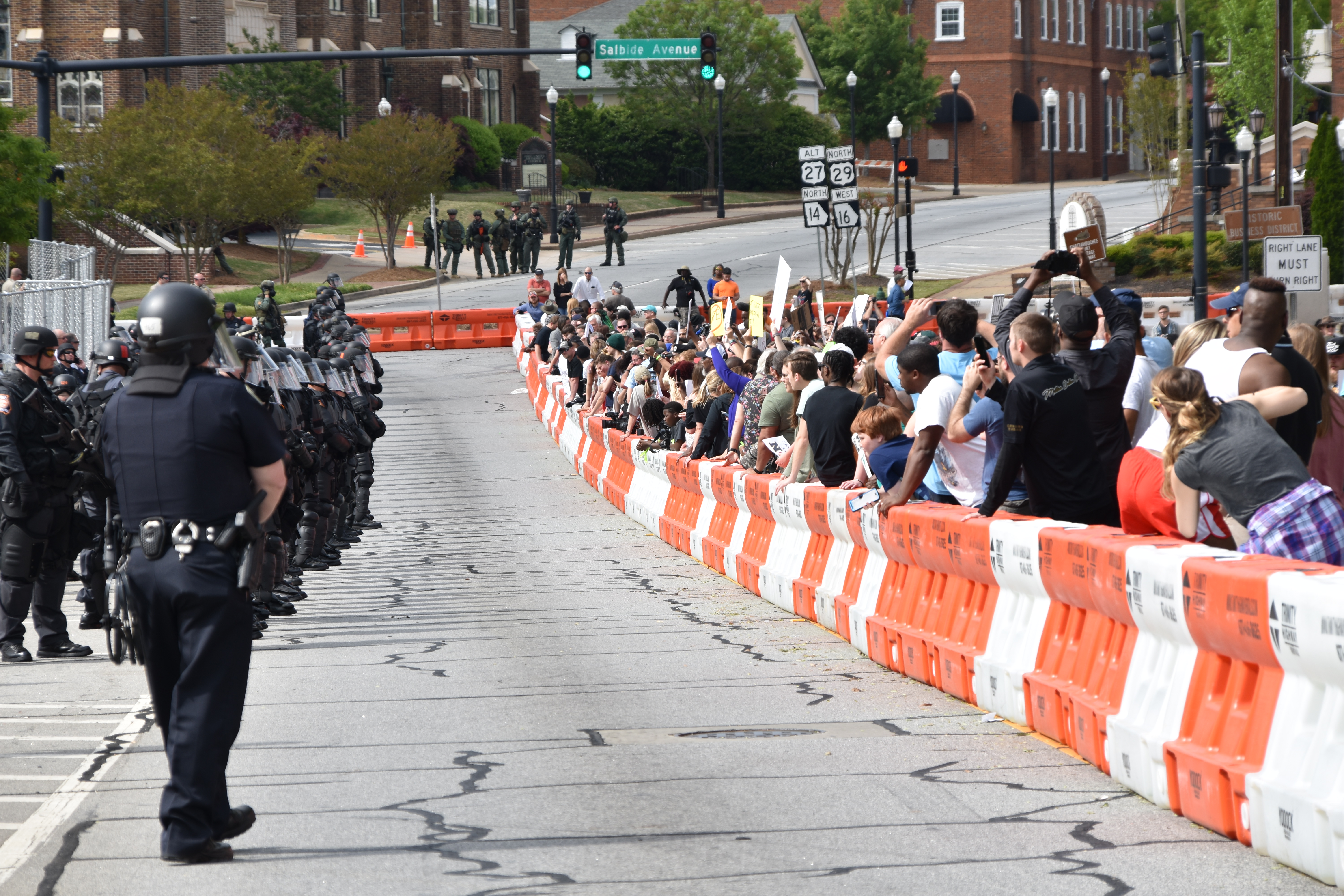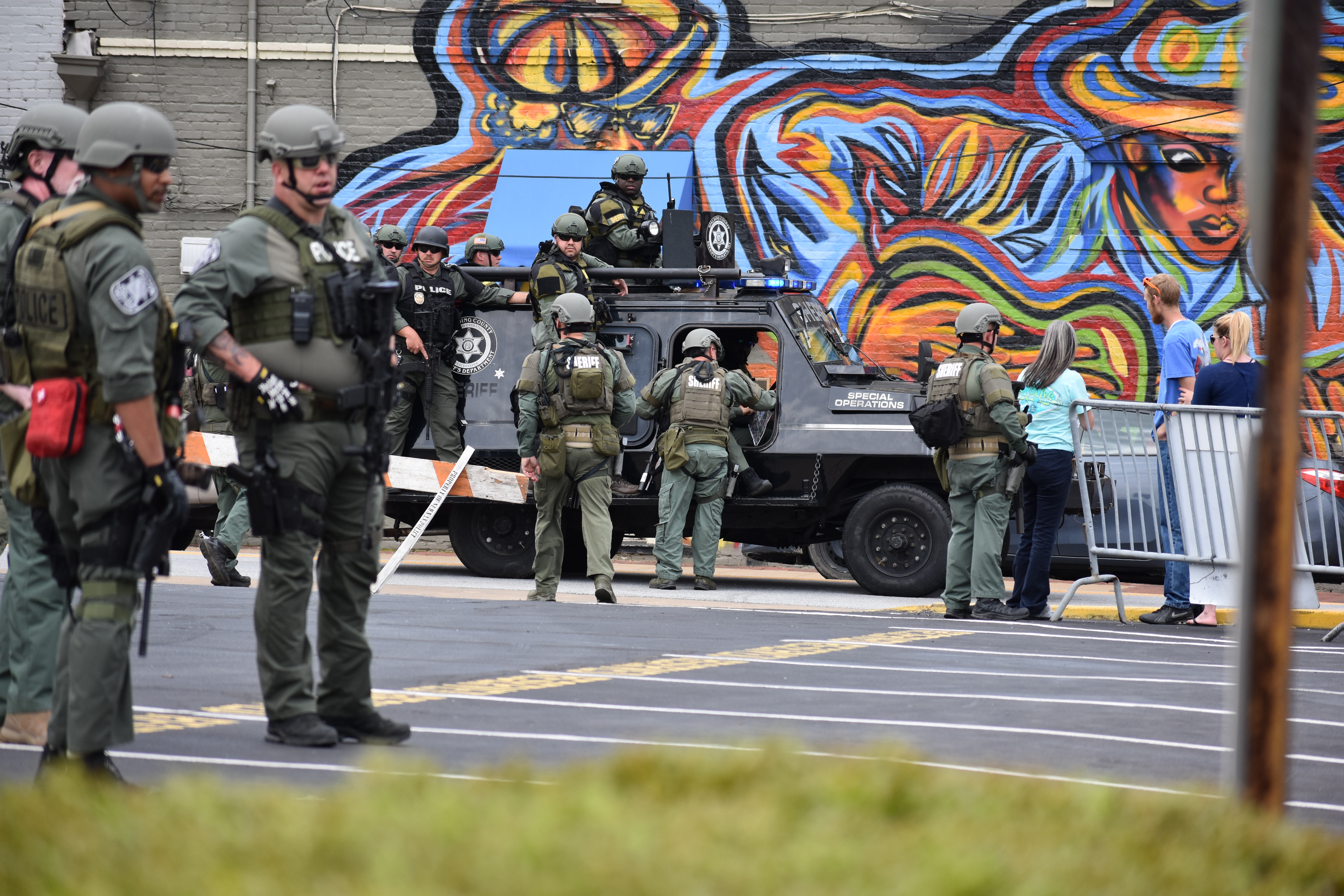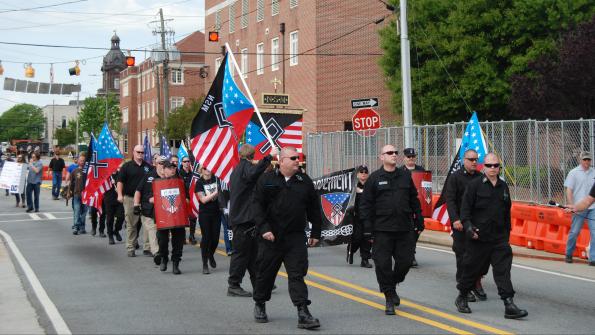Coming soon to your town
Something snapped last summer in Charlottesville, Va.
The now infamous “Unite the Right” rally has become the touchstone for violent right-wing demonstration and serves as a sobering example of what hate can do to our nation’s communities. Organized by the founder of the hate group Identity Evropa Nathan Damigo, the event quickly spiraled out of control when white nationalist demonstrators, counter-protesters and police violently clashed. The chaos culminated with James Alex Fields, a neo-Nazi, ramming his car into a group of counter-protesters, killing Heather Heyer and injuring at least 19 others in a deliberate attack, according to official sources.
During the immediate fallout, the city hired former U.S. Attorney for the Western District of Virginia Timothy Heaphy to conduct an independent review of the rally. On Dec. 1, the final report was released. It was sharply critical of the city’s handling of the event, particularly of law enforcement’s response.
According to the report, officers failed to take an active role in preventing violence and were instructed not to intervene except in extreme cases. This decision was “a tremendous tactical failure that has real and lasting consequences,” according to the report. Police supervisors “devised a poorly conceived plan that under-equipped and misaligned hundreds of officers. Execution of that plan elevated officer safety over public safety.” Shortly after the report was released, Charlottesville Police Chief Alfred Thomas resigned.
Charlottesville was a catastrophe by nearly all metrics, but it’s important that other communities understand what went wrong there so they don’t repeat the same mistakes. While it’s not likely, assuming that an event like Charlottesville couldn’t happen in your town is folly, and not planning for the worst could mean disaster.
What are the odds?
Demonstrations similar to the Unite the Right rally are increasing in frequency. Lecia Brooks, outreach director for the Southern Poverty Law Center (SPLC), says hate is growing in America. “People with hateful, bigoted thoughts… have become emboldened,” Brooks says. This, in turn, has led to an uptick in demonstrations by hate groups that local leaders must plan for and deal with, she says.
One of the main reasons for the increasing frequency, Brooks says, is because hateful rhetoric is becoming normalized – due in part to the language coming from our leaders, both locally and federally. Additionally, renewed interest in white supremacy is rising among young college-aged men, driven mostly by the so-called “alt-right” movement and headed up by figures like Richard Spencer and Matthew Heimbach. Presented as a pushback against political correctness run amok, hateful, bigoted ideas are being packaged in a more palatable way for some, and as a result, hate group membership is growing
Unsurprisingly, the instances of hate crimes and hate group demonstrations have grown. A comprehensive SPLC study in 2017 showed a 5 percent increase in the number of active hate groups from 2016, and the FBI’s hate crime report for 2016 showed a second straight year of steady growth.
Because of this groundswell of bigotry, the likelihood of a demonstration in any given community is increasing.
What can you do?
So, what can you do to stop the Nazis if they decide to demonstrate in your town square? The short answer is, not much.
“The most important thing to recognize is that the First Amendment squarely prohibits government officials from penalizing groups or speakers based on the content of their message or disliking their message or based on their viewpoint,” says Brian Hauss, an attorney with the American Civil Liberties Union (ACLU). “What cities and local officials can’t do is impose penalties on [hate groups] because they don’t like the message they’re espousing; they can’t deny them permits because they don’t like what they’re saying, or in any way attempt to stop them from speaking.
This doesn’t mean that local leaders have no recourse, though. What officials can, and should, do is ensure a robust law enforcement presence to ensure nothing gets out of hand, Hauss says. Cities can also engage in counter-programming to clearly condemn the values held by the demonstrating group. Additionally, cities can provide ample space for counter-protesters to come in and share their viewpoints.
Often, hate groups actually want local leaders to deny them their First Amendment rights, Hauss says. This is exactly what happened in the famous case in Skokie, Ind., in 1977. In short, the National Socialist Party of America was denied a permit to march through the town where a large population of Holocaust survivors lived. The ACLU stepped in to defend the Nazis’ right to march because they felt it was inappropriate for the city to withhold the permit based solely on hostility towards the group’s viewpoints. Ultimately, the city backed down. Interestingly enough, after the city approved the permit, the Nazis declined to demonstrate.
“They were more interested in being First Amendment martyrs than they were in actually having the rally,” Hauss says. “I think this is something we’re seeing a lot of today, too. A lot of these groups are more interested in having their First Amendment rights suppressed and claiming the mantle of First Amendment martyrdom than they are in actually having the demonstration.”
It’s important to protect everyone’s right to free speech, including hate groups, Hauss says. “First Amendment rights are indivisible. Time and again, history has shown that if you take these rights away from one group, inevitably the government will use that same power to suppress the rights of marginalized groups in the community,” he says. “I think it’s no coincidence that [other countries’] hate speech laws are deployed against activists for Palestinian rights or labor organizers for example.”
The core lesson of the First Amendment is that government should not get involved in trying to suppress one side of a political debate simply because it’s hostile to those viewpoints, Hauss adds. “If the government has the power to suppress the speech of people it opposes, that opens the door to tyranny.”
While this may be legally and philosophically sound, what happens when hate groups are knocking on the courthouse doors?
What happened in Newnan?

Newnan, Ga., is a small city of almost 44,000 people about 40 miles southwest of Atlanta. Its Mayor, Keith Brady, describes it as a quintessential small town – not the type of place you’d expect to see a National Socialist Movement (NSM) rally, and not at all the type of place that would welcome one.
“Obviously, none of us wanted them to be here,” Brady says, adding that unfortunately, there was no legal way to prevent them from demonstrating. “After consulting with not just our city attorney but national legal institutions as well as our city’s insurance carriers, we didn’t have a choice.” All the city could do, Brady says, is attempt to control it.
The first step, Newnan Police Chief Douglas “Buster” Meadows says, was to inform the mayor, the council and the city manager. Then, the planning started. “We started researching other places [the NSM] had been in the last couple of years to see what had happened there and what to look for,” he says. “We called them and asked what worked, what didn’t work and what we should concentrate on.”
Meadows learned it was important to have explicit rules of what the groups could and couldn’t do – what they could bring with them, what they could wear, when they could demonstrate and where they could be. Setting the ground rules in advance, Meadows says, helps prevent confusion during the actual event.
Taking a lesson from Charlottesville, Meadows says he made one of the top priorities of responding officers – beyond protecting citizens, property and themselves – to keep the demonstrators and counter-protesters physically apart. If allowed to be in close proximity to one another, tempers don’t take long to flare. Unlike the orders in Charlottesville, officers were expected to shut down any attempt at violence quickly and efficiently. “We were prepared for the worst-case scenario,” he says.
That preparation meant partnering with neighboring law enforcement agencies to surround both groups with nearly 700 heavily-armed and armored officers. “All the public safety in Coweta County [Ga.,] worked together,” Meadows says. “We were all in it together.”
However, beyond the law enforcement response, it was also important to get the community involved, Meadows says. The downtown businesses leaders, the members of the faith-based community and average residents were kept in constant communication. Because of this, the community stepped up in a big way to disavow the Nazis, and reaffirm the community’s values – an unexpected benefit of having a hate group come to town, Meadows says.
Two local men – Nathan Brain and Derek Riede – held an event called Newnan Strong the night before the Nazis demonstrated to bring the community together and repudiate their message, according to The Newnan Times-Herald.
“This is not our narrative. This is not what we believe,” Brain told the paper. “Our voice and our vision as a community is that our community is a good place, a place where people get along… We’re going to over-shine the ugly with what Newnan’s about.”
The day of the event was tense, Meadows says. About 30 NSM members came to demonstrate and approximately 250 counter protesters appeared throughout the day. Officers were instructed to enforce the laws and enforce the rules set out for the event. Meadows said they were hoping that no arrests would be made, but about a dozen counter-protesters were taken into custody for minor charges. There was no violence or destruction of property, and at the end of the day, direct costs to the city were around $80,000, Brady says.
Ultimately, both Meadows and Brady felt the strategy worked, and the day was a success. Although there were criticisms the police response was too aggressive, the mayor feels it was acceptable given the potential of what could have gone wrong.
“There were two goals – nobody gets hurt, and nothing gets broken,” Brady says. “What we did that day was in the interest of public safety, and if someone was going to create a problem, they were going to be disappointed. I fully support the way public safety approached the situation.”
Meadows emphasizes it wasn’t his department alone that kept his community safe. Careful planning, collaboration and the cooperation of multiple parties were essential to ensure success.
While Newnan was able to prevent violence from occurring, what can be done to prevent these types of events in the first place?
What’s our responsibility?

When we think of hate in America, we generally picture Nazis marching down the street or threatening graffiti sprayed on the doors of a mosque; however, this line of thinking creates a reactionary view of hate – that it’s something local leaders must respond to. Brooks says this position is dangerous. Cities and towns must be proactive to make sure hate doesn’t have the opportunity to take root in their communities in the first place, and she thinks this has a lot to do with the language local leaders use.
“When we’re debating issues, we have to be careful not to dehumanize groups of people. Don’t offer red meat to hate groups,” Brooks says. “When elected officials themselves start using the same language as hate groups – for instance with immigrants – we need to be careful.”
Elected officials have an obligation to stand up for the rights of every person in their community, Brooks says. It’s important that diversity and inclusion are valued and this value is clearly demonstrated so hate cannot find an ally.
To this end, local governments have a tremendous responsibility in creating inclusive, equitable communities. Patrice O’Neill, founder and executive producer of Not in Our Town, an organization that uses documentary filmmaking and grassroots organization to build safer communities, says it’s the role of local leaders to clearly communicate their values, not just as a counterpoint to events, but at all times.
“It’s important that cities not wait until a hate group comes to town to do this,” O’Neill says. “It’s possible to get people together and express these values in the absence of an event.” Local leaders need to be proactive, she says, to prevent violence from occurring. To accomplish this goal, O’Neill recommends city officials work to bring community leaders together to oppose inequality and bigotry.
“Real change takes place when city leaders are at the table with diverse community member,” she says. “We need to see this as a partnership in the community. We can’t do this on our own.”
Editor’s note: Special thanks is due to The Newnan Times-Herald for generously providing American City & County with the images for this story.
_____________
To get connected and stay up-to-date with similar content from American City & County:
Like us on Facebook
Follow us on Twitter
Watch us on YouTube



















